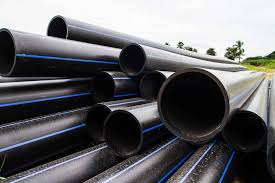Nov . 05, 2024 02:01 Back to list
pvc to hdpe pipe connection products
Connecting PVC to HDPE Pipes A Comprehensive Guide
When it comes to piping systems, PVC (Polyvinyl Chloride) and HDPE (High-Density Polyethylene) are two of the most widely used materials. They are favored for their durability, chemical resistance, and versatility in various applications, such as water supply, drainage, and irrigation. However, there may be instances where there is a need to connect PVC pipes to HDPE pipes. This article aims to provide a comprehensive guide on how to effectively connect these two types of pipes.
Understanding PVC and HDPE
Before delving into the connection methods, it's essential to understand the properties of both PVC and HDPE.
- PVC Pipes PVC is a rigid plastic known for its strength and resistance to environmental degradation. It is commonly used in construction and plumbing due to its low cost and ease of installation. PVC pipes are available in various sizes and are often used for drainage and pressure applications.
- HDPE Pipes HDPE is a flexible plastic that is resistant to impact and possesses high tensile strength. It is commonly used for water and gas distribution, as well as in agricultural applications. HDPE is recognized for its ability to withstand a wide range of temperatures and chemicals, making it suitable for various environmental conditions.
Why Connect PVC to HDPE?
There are several reasons why you might need to connect PVC and HDPE pipes
1. System Compatibility In many cases, different sections of a piping system may be constructed using different materials. This can occur due to availability, cost, or specific application requirements.
2. Repairs and Upgrades If a section of the existing piping system made of one material requires repair or replacement, it may be more practical to connect it to a different material.
3. Adaptation to Site Conditions In some scenarios, the terrain or environmental factors may necessitate the use of both PVC and HDPE pipes for optimal performance.
Methods for Connecting PVC to HDPE
pvc to hdpe pipe connection products

There are several methods to connect PVC to HDPE pipes. Here are the most common techniques
1. Mechanical Couplings These fittings can join PVC and HDPE pipes effectively. Mechanical couplings are usually made from materials such as rubber or plastic and are designed to provide a secure connection. They can accommodate the different expansion rates and flexibility of the two materials.
2. Flanged Connections If the piping systems require frequent disconnections, flanged connections can be an excellent choice. This involves installing flanges on the ends of both pipes and bolting them together. Flanged joints can provide a strong and leak-free connection, making them suitable for high-pressure applications.
3. Solvent Cement and Fusion Welding While solvent cement is used exclusively for bonding PVC, fusion welding can be employed for HDPE. To connect these two materials using this method, it is often necessary to use a transition fitting specifically designed for joining PVC to HDPE. These transition fittings typically utilize a rubber gasket or a mechanical means of connection.
4. Transition Fittings The simplest and often the most effective method to connect PVC to HDPE is to use a specialized transition fitting. These fittings are specifically designed to handle the differences in material properties and ensure a tight and secure connection. They typically feature a combination of threads and slip connections or flanges.
Considerations for Connection
When connecting PVC to HDPE pipes, it is crucial to consider the following
- Temperature and Pressure Ratings Be aware of the pressure and temperature limits of both types of pipes to prevent potential failure.
- Chemical Compatibility Ensure that any materials used for sealing or coupling are compatible with the fluids being transported.
- Local Codes and Standards Always check local plumbing codes and standards to ensure compliance with regulations regarding the installation of piping systems.
Conclusion
Connecting PVC to HDPE pipes can be accomplished using various methods, each offering specific advantages. By understanding the characteristics of both materials and following safe installation practices, you can create a reliable and efficient piping system suitable for your needs. Always consult with professionals and adhere to local regulations to ensure the integrity and functionality of your piping connections. With the right approach, the combination of PVC and HDPE can offer a robust solution for diverse applications.
-
High-Quality PVC Borehole Pipes Durable & Versatile Pipe Solutions
NewsJul.08,2025
-
High-Quality PVC Perforated Pipes for Efficient Drainage Leading Manufacturers & Factories
NewsJul.08,2025
-
High-Quality PVC Borehole Pipes Durable Pipe Solutions by Leading Manufacturer
NewsJul.08,2025
-
High-Quality PVC Borehole Pipes Reliable PVC Pipe Manufacturer Solutions
NewsJul.07,2025
-
High-Quality UPVC Drain Pipes Durable HDPE & Drain Pipe Solutions
NewsJul.07,2025
-
High-Quality Conduit Pipes & HDPE Conduit Fittings Manufacturer Reliable Factory Supply
NewsJul.06,2025

